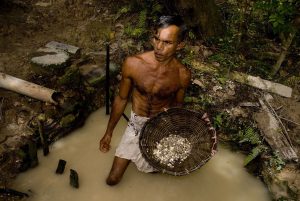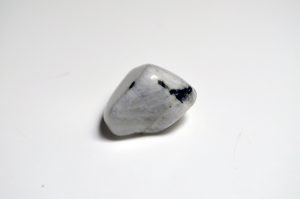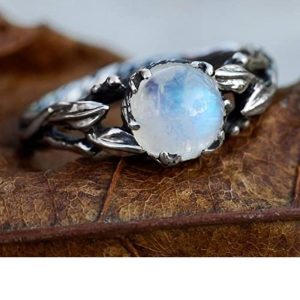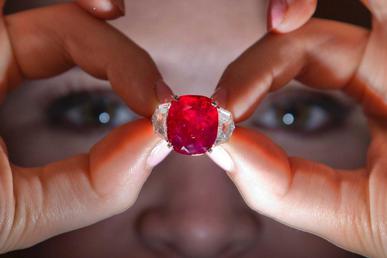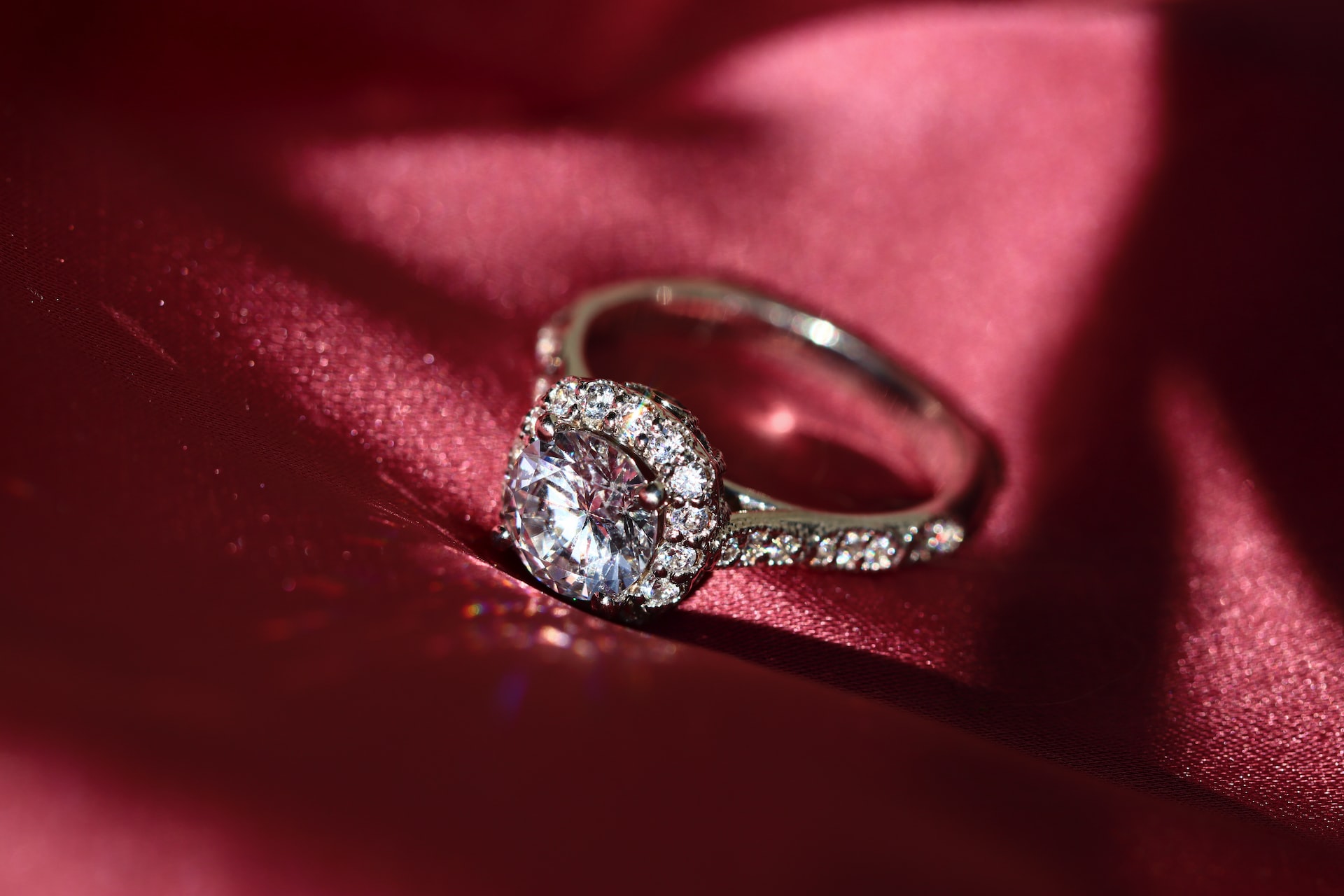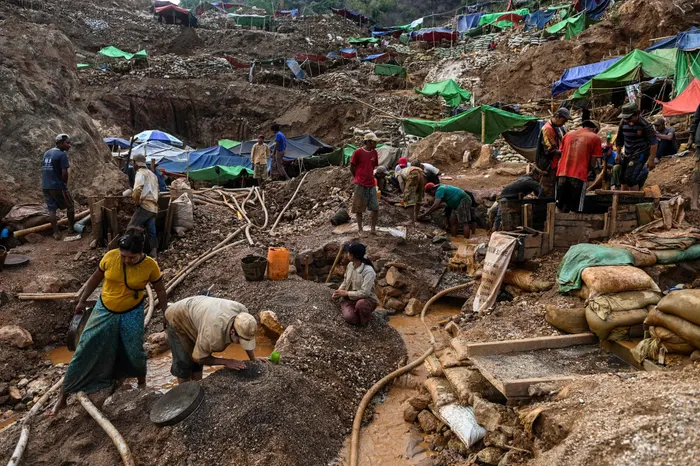Sri Lanka Moonstone Mining
Sri Lanka is primarily a Buddhist country, and the Sinhalese majority hold a special reverence for the moon. When the moon is full, Sri Lankans enjoy a holiday. They take a break from their jobs and school and instead visit the temples for worship. And so they believe that the moon blessed some of their lands with a fragment of the moon’s beams which solidified, creating the precious moonstone. And you may be tempted to believe it too if you have ever held a moonstone in your hands.
What do you know about Sri Lanka Moonstone Mining? What is the moonstone? What makes it so special? What causes that ethereal glow? Why is it so sought after? How come the blue moonstone is endemic only to Sri Lanka? These are some questions you might ask. Come, let’s take a journey through the moonstone mines of Meetiyagoda to find out.
Sri Lanka Moonstone Mining: The moonstone mines of Meetiyagoda.
Moonstones are rare. But highly desirable precious stones and are believed to have many healing properties for both body and mind. And they make exquisite jewelry pieces. There are many types of moonstones, depending on their colors. But the blue moonstones are found only in one place on Earth. A place called Meetiyagoda in the SouthWest region of Sri Lanka. This gem was previously called Ceylon opal.
Moonstone mining is a difficult and risky process. Gem miners and mine owners let themselves down dangerously narrow mining shafts and work with hammers and chisels to carve out soil and check for moonstones. But their hard work is rewarded when they do find some precious stones that would pay for their expenses for a few months. Meetiyagoda has the world’s largest vein of moonstone-bearing igneous rock called pegmatite.
The Sri Lankan government has made certain regulations to preserve the moonstone mines. Moonstones can only be mined with a permit, and taxes must be paid on the stones found. Villagers still follow age-old mining techniques to dig up and wash stones. After the tedious task of chiseling soil into buckets which are brought out of the mines by rope, the soil and stones are washed only on auspicious days. Washing enables them to sort out the pebbles and rocks in the soil, and if they are lucky, they’ll find a few moonstones.
Sri Lanka Moonstone Mining: The composition of a moonstone
The ethereal glow of the moonstone is caused by an optical effect known as adularescence. Adularescence happens when light is scattered between microscopic layers of the gem’s structure. The highest quality moonstones have this phenomenon when viewed from any angle. Blue moonstones are characterized by their milky-white texture tinged in blue. A Ceylon moonstone looks like a sliver of the moon shining through a bed of clouds. Some moonstones are transparent or translucent, depending on the composition of the rock.
The raw moonstone or the moonstone rock is the mineral feldspar, a sodium aluminosilicate. Moonstones are generally placed along the Amazon stone and the sunstone, two other feldspars that have different colorations and compositions.
The most popular Sri Lankan moonstone is the blue moonstone, but there are other variations within the same color family. In Sri Lanka, there are white moonstones, green moonstones, pink moonstones, blue moonstones, orange moonstones, and yellow and brown moonstones. Faint grey, green or brown moonstones are known as ‘muddy moonstones’ in the industry. The most widely sought-after moonstones are the transparent ones that have crystal quality and occur with strong sky-blue to dark blue schiller colors.
Crystal-quality moonstones are rare. Generally, those found in Sri Lanka are white, blue, and semi-blue. Blue moonstones can be crystal blue, blue, and muddy blue. And white moonstones are crystal white, silvery-white, pearly white, normal white, and muddy white.
Meetiyagoda is not the only place where moonstones can be found. Various types of moonstones have been found in many parts of Sri Lanka, like around the Mahaweli River and Walawe River and in the central hill province of Sri Lanka.
Sri Lanka Moonstone Mining: Uses and Benefits of Moonstones
Moonstones are valued for their enthralling beauty when set as inexpensive pieces of jewelry. They are suitable for both modern and vintage designs. And whether, in a necklace, ring, or earring, moonstone gems look very charming.
In addition to being used for jewelry, moonstones are used for their healing properties. Moonstones are known as the stone of emotions and are linked with mental stability and equilibrium. Some cultures believe that moonstones can shield the wearer from emotional turmoil. Many believe that wearing a moonstone can make the person more focused, sharp-minded, and strong-visioned. It is believed to bring balance to men by adding yin (female) energy.
Moonstones have a strange property. They attract water. The wearers of moonstones are supposed to have a close link with water. And, just like the pull of the moon can alter the tides in the ocean, moonstones can have an effect on the person wearing them.
Conclusion
Sri Lanka Moonstone Mining is an ancient practice that is revered more as a culture than as a business. Ceylon moonstones are among the best moonstones in the world due to their high quality. Whether local beliefs are true or not, moonstones have definitely enthralled the world with their exquisite beauty and charm. Moonstones are popular among both men and women.
Moonstones are not the only gems found in Sri Lanka. There are many other stones that are famous due to their size and quality. Read this article for the best 5 gems of Sri Lanka.

